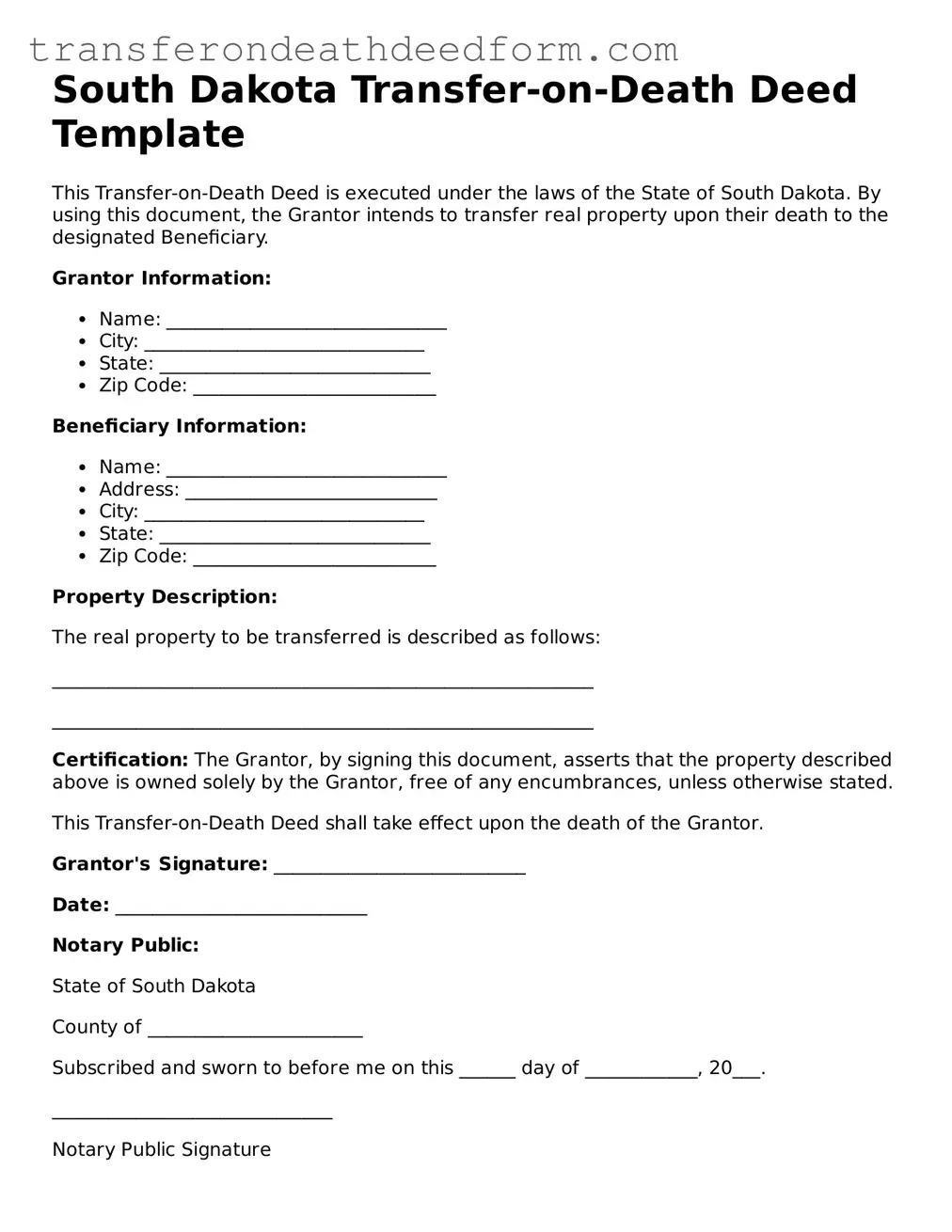South Dakota Transfer-on-Death Deed Template
This Transfer-on-Death Deed is executed under the laws of the State of South Dakota. By using this document, the Grantor intends to transfer real property upon their death to the designated Beneficiary.
Grantor Information:
- Name: ______________________________
- City: ______________________________
- State: _____________________________
- Zip Code: __________________________
Beneficiary Information:
- Name: ______________________________
- Address: ___________________________
- City: ______________________________
- State: _____________________________
- Zip Code: __________________________
Property Description:
The real property to be transferred is described as follows:
__________________________________________________________
__________________________________________________________
Certification: The Grantor, by signing this document, asserts that the property described above is owned solely by the Grantor, free of any encumbrances, unless otherwise stated.
This Transfer-on-Death Deed shall take effect upon the death of the Grantor.
Grantor's Signature: ___________________________
Date: ___________________________
Notary Public:
State of South Dakota
County of _______________________
Subscribed and sworn to before me on this ______ day of ____________, 20___.
______________________________
Notary Public Signature
My Commission Expires: _______________
